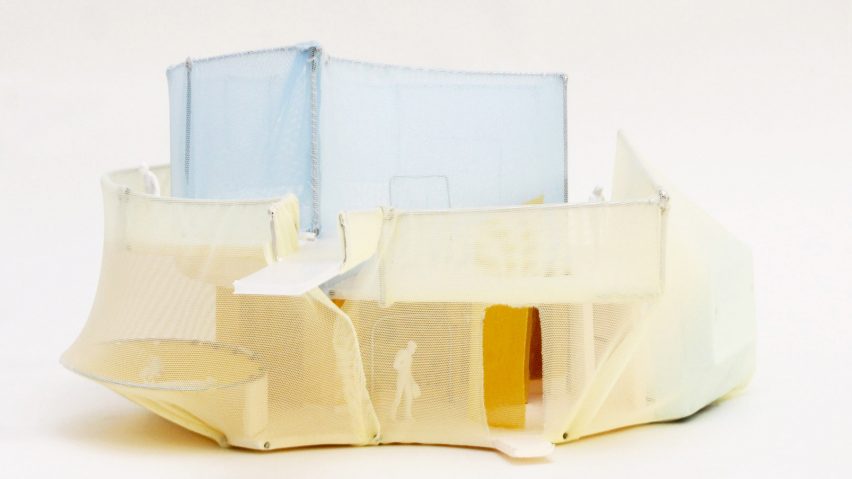Architecture studio SO-IL has designed a major installation for Lisbon's Museum of Art, Architecture and Technology that creates a new public route through the middle of the Amanda Levete-designed building via a secret rear entrance.
Called Beeline, the intervention allows pedestrians to walk from the city to the waterfront through the centre of the museum's ovoid main exhibition space.
"Beeline is an architectural intervention that dissects the MAAT building both in plan and section, connecting the entrance from the quayside directly with a new access point facing the city, said SO-IL founders Jing Liu and Florian Idenburg.
"This gesture not only transforms the way visitors enter and experience the museum but also links the formal entry to a new, clandestine entrance through the loading dock."
At the centre of the installation is an auditorium designed to host a five-month public programme of events called MAAT Mode.
MAAT executive director Beatrice Leanza described MAAT Mode as a "transformative gesture that repurposes the museum into a polyfunctional civic arena where public life is debated, probed, challenged and possibly inspired towards a more inclusive and equitable making of the future."
Beeline, together with an exhibition of SO-IL's work called Currents - Temporary Architectures by SO-IL, was due to open to the public on 27 March, but have been postponed due to the coronavirus pandemic.
Instead, Beeline, the Currents exhibition and Maat Mode have been brought to life digitally on MAAT's website, and will be featured in a special collaboration with Dezeen's Virtual Design Festival on Monday 20 April.
The VDF collaboration will involve a live video interview with Beatrice Leanza and SO-IL's Jing Liu and Florian Idenburg, plus exclusive videos about SO-IL's work, the Beeline installation and the Currents exhibition.
The SO-IL projects and the MAAT Mode programme are the first elements of a new strategy for the museum that has been developed by Leanza, who joined the Lisbon museum last year.
"One of the immediate questions that surfaced when I took on the challenge and opportunity to work with MAAT was around the type of interaction that art, architecture and technology would perform as constitutive of this institution," Leanza said.
Leanza added: "Through the commission of SO-IL and the launch of MAAT Mode, I am thrilled to be taking the first step on this journey of discovery and look forward to announcing more details of the new MAAT programme soon."
Based in Brooklyn, New York City, SO-IL is known for both permanent buildings and temporary architecture projects including a three-storey, net-covered dwelling tower built in Milan in 2017 and an installation that wove a giant hammock between 130 trees.
Designed by Amanda Levete Architects, MAAT opened in 2016 but been temporarily closed since December after the museum's entrance suffered storm damage.
Project credits:
Project team: SO-IL (Florian Idenburg, Martina Baratta, Yuanjun Summer Liu)
Engineering: Clanet e Brito (Edgar Brito)
Construction and installation ArtWorks (José Miguel Pinto, Francisca Marques, Valentim Neves)
Technical support: Versátil Partilha, Campus Fundação EDP
Security plan Paulo Cardoso

